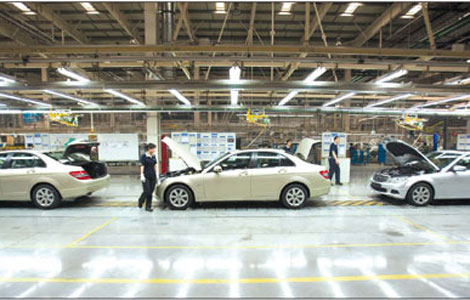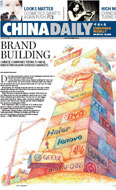Web Comments
Is it time to ban fireworks again?
Updated: 2011-02-14 16:53
By Huang Shuo (chinadaily.com.cn)
As Chinese get together with their family and celebrate the Year of the Rabbit, fireworks play an essential role to help create a cracking atmosphere. However, every coin has two sides. Fireworks also cause problems for our environment, safety and health. In a recent online poll titled "Do you think it's time to ban fireworks in big cities?" by China Daily website, about two thirds of those surveyed believed it is time to ban fireworks again in big cities.
According to data collected by the Chinese Ministry of Environmental Protection, air quality in 22 out of 86 cities under its monitor registered light levels of pollution on the second day of Chinese Lunar New Year (Feb 4, 2011).
Since the eve of the Chinese Lunar New Year, air quality in Beijing, the capital of China, has been deteriorating, shows the monitoring data of the ministry. The city’s air quality score on the air pollution index (API), with 0 being the best, has dropped for three days from 58 to 111, before finally hitting the level of light pollution.
In other parts of the country, the score in Wuhan, capital Central China’s Hubei province, hovered at 197 from 12 am on Feb 2 to 12 am on Feb 3 on the API, which was classified as light pollution. In comparison, the city scored 69 the previous day, which meant “good” air quality, the monitoring data from Wuhan Environmental Monitoring Center revealed. Thanks to fireworks, Chengdu city, capital of Southwest China’s Sichuan province, was either “heavily polluted” (251 to 300 on API) or "severely polluted" (more than 300 on API) for five days during the seven-day Spring Festival holiday.
When we enjoy the flowery and wonderful sight of firecrackers, along with the colorful displays, sulfur dioxide, nitric oxide, nitrogen dioxide and other poisonous gases also fill the sky. They can damage our respiratory, nervous and cardiovascular systems, as well as cause eye problems. Some potential illnesses may be triggered and aggravated when inhaling those gases.
In addition, there are safety issues. The main culprit was display shells, a kind of illegal large firecracker, which was responsible for most of the injuries. Display shells dominated the skies while people were counting down the Year of the Rabbit at the stroke of midnight of Feb 2. Eyes are the most fragile organ and the most easily injured by firecrackers. Especially for children, they may easily become victims of firework abuse.
Between New Year's Eve and the first day of the Year of the Rabbit, the number of fire accidents in Beijing caused by fireworks reached 161, up 178 percent, in comparison with 58 in the same period last year. Because of dry climate and prevalent droughts this winter, most regions in North China like Hebei and Shanxi provinces suffer from higher risks of fire hazards.
Noise pollution is also a product of fireworks. The incessant explosive sounds cause insomnia, especially for patients, the elderly and children. The monitoring of environmental protection authorities showed the noise can reach 135 decibels in the firing areas, which far exceeds the acceptable range.
Before banning fireworks on Dec 1, 1993 (the ban was abolished in 2006), Beijing’s maximum transient noise could reach as high as 125 decibels, far surpassing the national standard for noises in the nighttime – 45 decibels.
Discharging firecrackers inevitably contaminates the environment through water and soil, and adds a burden for landscaping and ground keeping workers in our city. The paper waste from fireworks also has a bad impact on the environment.
In view of the current situation, it is time for governments to adjust the policy again as collective public firework displays organized by the related authorities are necessary right now to reduce pollution and the risk to people. On the other hand, individuals should refrain from setting off fireworks. Joint work can make the sky cleaner during the Spring Festival holidays.
The author can be reached at larryhuangshuo@gmail.com.
E-paper

Factory fever
Despite auto manufacturing bubble scare, car giants gear up expansion of factories.
Dressed for success
Fabric of change
High spirits
Specials

Earthquake Hits Japan
A massive 8.8 magnitude quake hit the northeast coast of Japan on March 11,2011.

NPC & CPPCC sessions
Lawmakers and political advisers gather in Beijing to discuss major issues.

Slide: Japan quake
Devastating earthquake and tsunami left millions without water, electricity, homes or heat.
